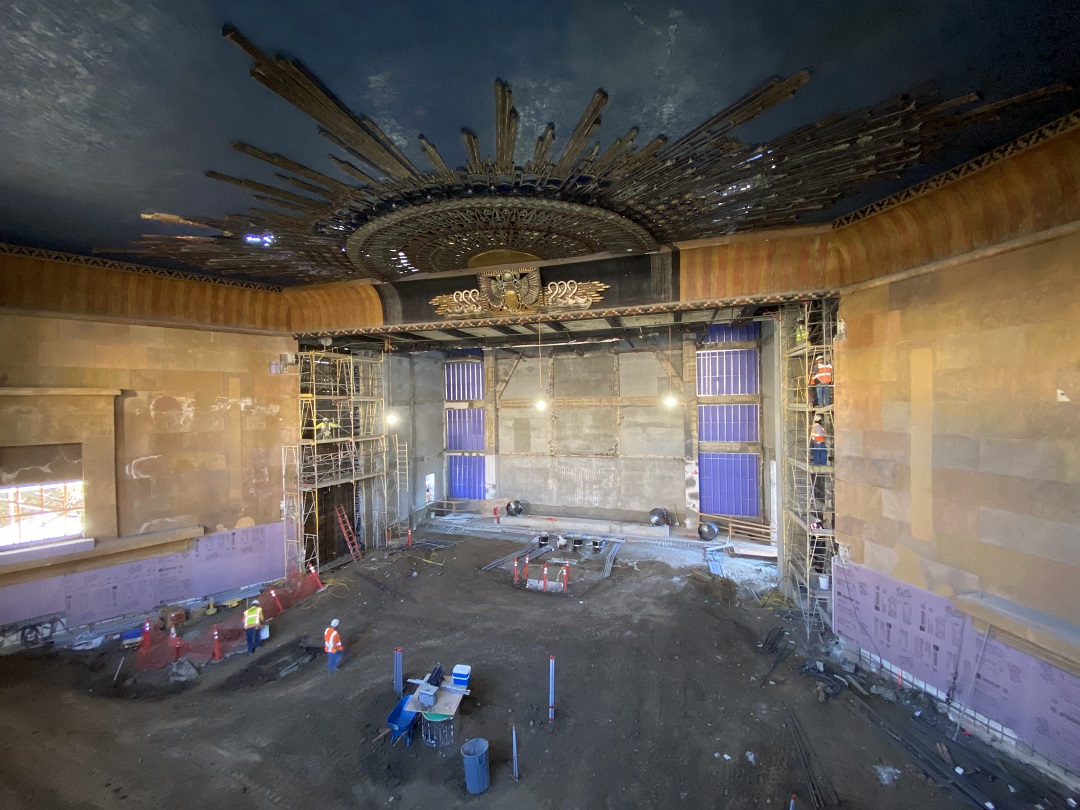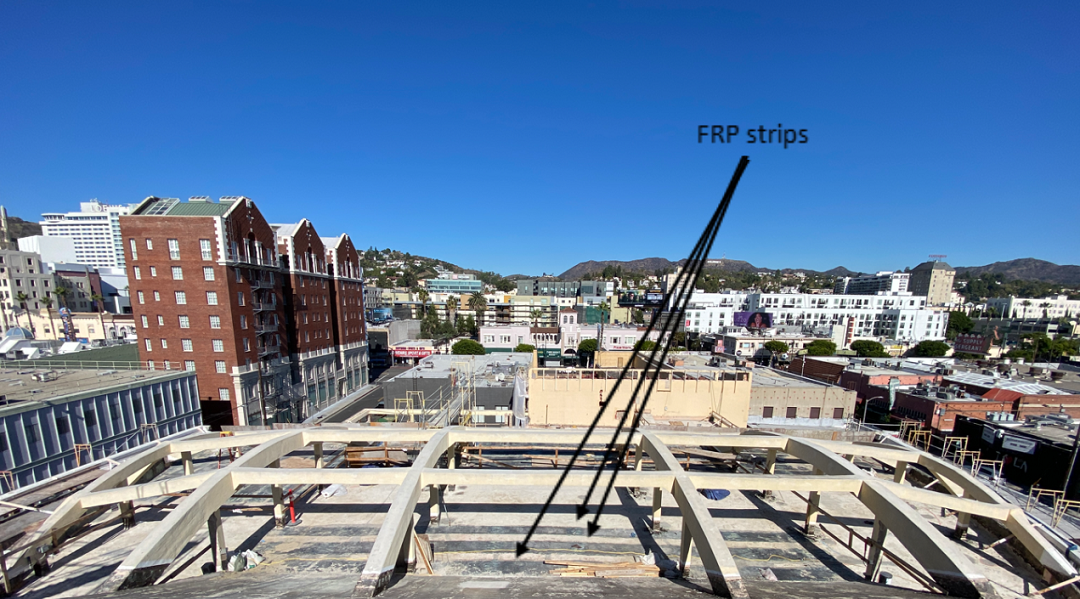Structural renovation work continues on an historic, 1920s-era theater in Hollywood, California. This major renovation will improve the structural performance of the building and help ensure that theatergoers and building occupants are safe in the event of a major earthquake. We are excited to share a second update on this project that focuses on the use of fiber-reinforced polymer (FRP) for strengthening the theater’s roof diaphragm.
Photo 1 shows the existing beautifully decorated ceiling of the theater. This ceiling is supported above by reinforced concrete trusses (see photo 2) and beams that tie into a structural slab system. The roof slab must support its own weight plus various mechanical, electrical and plumbing components. Additionally, this slab acts as a diaphragm during a seismic event and was found to be structurally deficient. FRP was chosen as the best means of strengthening the diaphragm in this case, because the material is lightweight, especially easy to install in a downward direction, and very thin. Photo 3 shows another location where FRP strips have been added for diaphragm strengthening.


Less noticeable, but indicated by arrows in photo 3, is that FRP anchors were used to improve the structural performance of the FRP strips. Using FRP anchors not only delays debonding of the FRP strips at the concrete interface, but also allows the FRP fabric to achieve a higher design strain and hence add more strength. The anchors are 1/2″ in diameter and embedded roughly 3″ deep in the slab. Anchors are located not only at the end of the FRP strips but also along the length of the strips. In some cases, where structural deficiency existed, bidirectional glass fabric (see photo 4) was used to strengthen the diaphragm-to-wall connection. Bidirectional fabric in this case means that the fibers run +/- 45°. This orientation of fibers makes the fabric especially suitable for resisting shear forces at the interface of the diaphragm and wall.


Retrofit work continues on this historic 100 year old theater. We look forward to sharing more FRP applications as construction progresses. Stay tuned for more updates!




